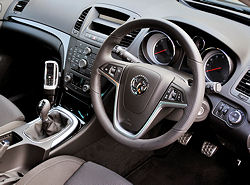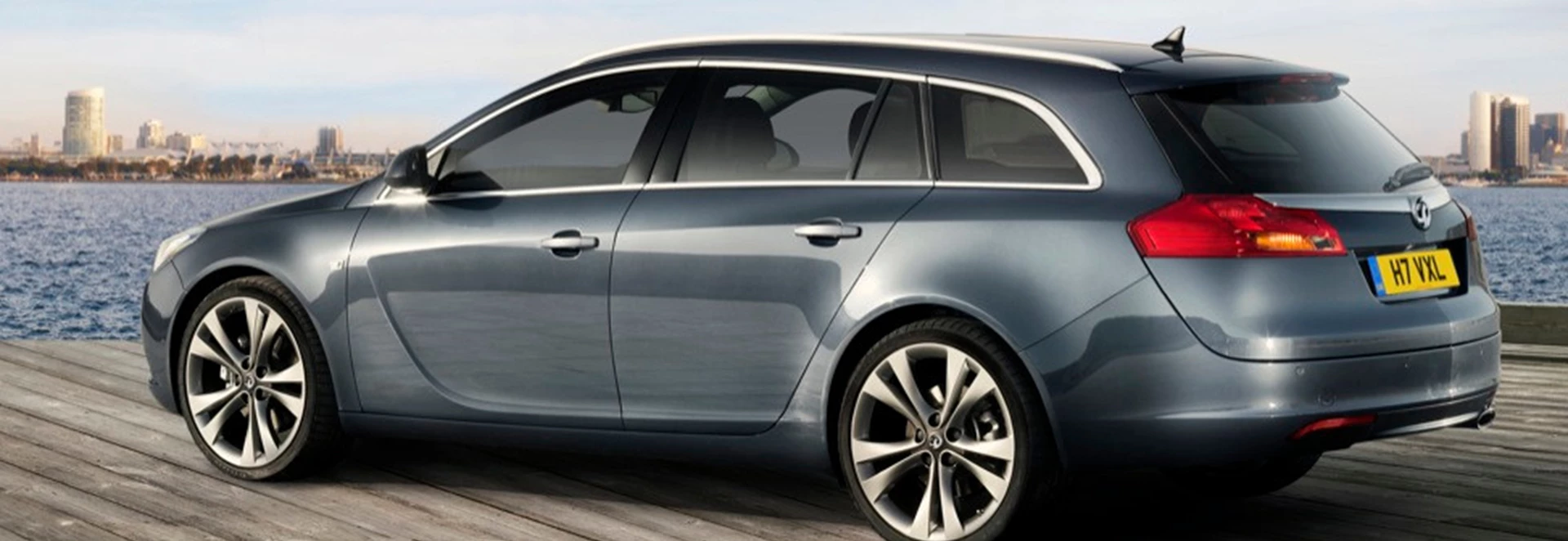Perhaps the most significant change to the Vauxhall Insignia line-up in 2012 has been the introduction of the most powerful diesel engine the company has ever produced. The BiTurbo is a two-litre diesel with, as you may already have guessed from the name, two turbochargers, and their combined effect - along with those of a modified cylinder head and new camshafts - is to provide a record-breaking output of 192bhp.

As a result, the BiTurbo gives the Insignia estate (or, in Vauxhall terminology, Sports Tourer) a top speed of 140mph and a 0-60mph time of 8.4 seconds. This makes it quite a bit quicker than the 158bhp version, but don't run away with the idea that the BiTurbo therefore feels like a performance car. In fact, it's quite placid in most circumstances, but if you press the accelerator pedal a bit further down than usual it will accelerate quite sturdily, and that could be very useful if there's any rapid overtaking to be done.
The results of the EU test imply that the BiTurbo will cost no more to run than the single-turbo 158bhp car, since its 55.4mpg combined fuel economy and 134g/km CO2 emissions are actually slightly better. If you use the extra power on a regular basis, of course, things will be different in the real world, and if you're really concerned about running costs you'd be better with the 128bhp diesel in either regular or super-economy ecoFLEX forms, the latter in particular being in a different world of taxation with its 119g/km CO2 figure.
Both are also over £2000 cheaper to buy in the first place, assuming identical trim levels, but then again they're quite a bit slower. It all comes down to whether you consider economy or performance to be more important.
One problem with the BiTurbo is that, in common with every diesel engine Vauxhall currently offers, it's quite noisy. The characteristic diesel rumble is apparent even on a motorway cruise, which is quite rare these days. And, like every Insignia regardless of body shape, this one is hard to see out of the back of. (There must be a more elegant way of phrasing that. I'll work on it.) The rear window is almost like a porthole, and there are enormous rear three-quarter blind spots.
More positively, the Insignia is pleasant to drive, with much lighter steering and gearchange actions than the size of the car might lead you to expect. The model reviewed here was also fitted with FlexRide adapative suspension - standard on all BiTurbos, though not on all Insignias - and a certain amount of experimentation confirmed my earlier view that this works better on front-wheel drive cars than it does on four-wheel drive ones.
I have no idea why this should be the case, but there it is. Sport, the firmest setting, works well most of the time, though you might want to switch it off on really rough surfaces, while Comfort makes the car more wallowy than I'm happy with. Sport can also make the accelerator more responsive to inputs than I'd like it to be, but you can make that not happen by delving into the system settings.

The differences between any one FlexRide mode and either of the others are subtle, and none of them greatly affects the fact that this Insignia generally rides well, even on the sports suspension that's fitted to all BiTurbos and the 20" wheels and low-profile tyres that came with the test car as an £870 option.
They weren't the only optional items by any means. Keen to show the media what it has available, as manufacturers generally are, Vauxhall had also loaded this SRi with satellite navigation, front and rear parking sensors, traffic sign recognition, lane departure warning, forward collision alert, following distance indicator, adaptive cruise control, DAB digital radio, sports front seats with extendable cushions, Nappa leather upholstery, tyre pressure monitoring, a full-sized spare wheel (the single most important extra of them all), Brilliant Solid paint, various interior styling upgrades and much else.
That lot sent the price shooting up from £28,680 to £35,900, and since some of it equals - or, in the case of the wheels, surpasses - what's fitted as standard to the top-spec Elite, it might be questioned whether what I was driving could any longer be described as an SRi at all.
But it can, because it still didn't have quite a number of items that even a completely unadorned Elite offers, such as dual-zone climate control air-conditioning (it's single-zone on the SRi), adaptive forward lighting, dynamic beam levelling, an eight-way adjustable driver's seat, electric and lumbar adjustment of the front passenger's seat and electrically foldable door mirrors, the one on the driver's side being self-dimming.
The BiTurbo engine is also available for Sports Tourers in SRi VX-Line trim, but not for the cheaper ES, Executiv or Tech Line, or - slightly oddly - the SE, which has a higher standard specification than the SRi does.




